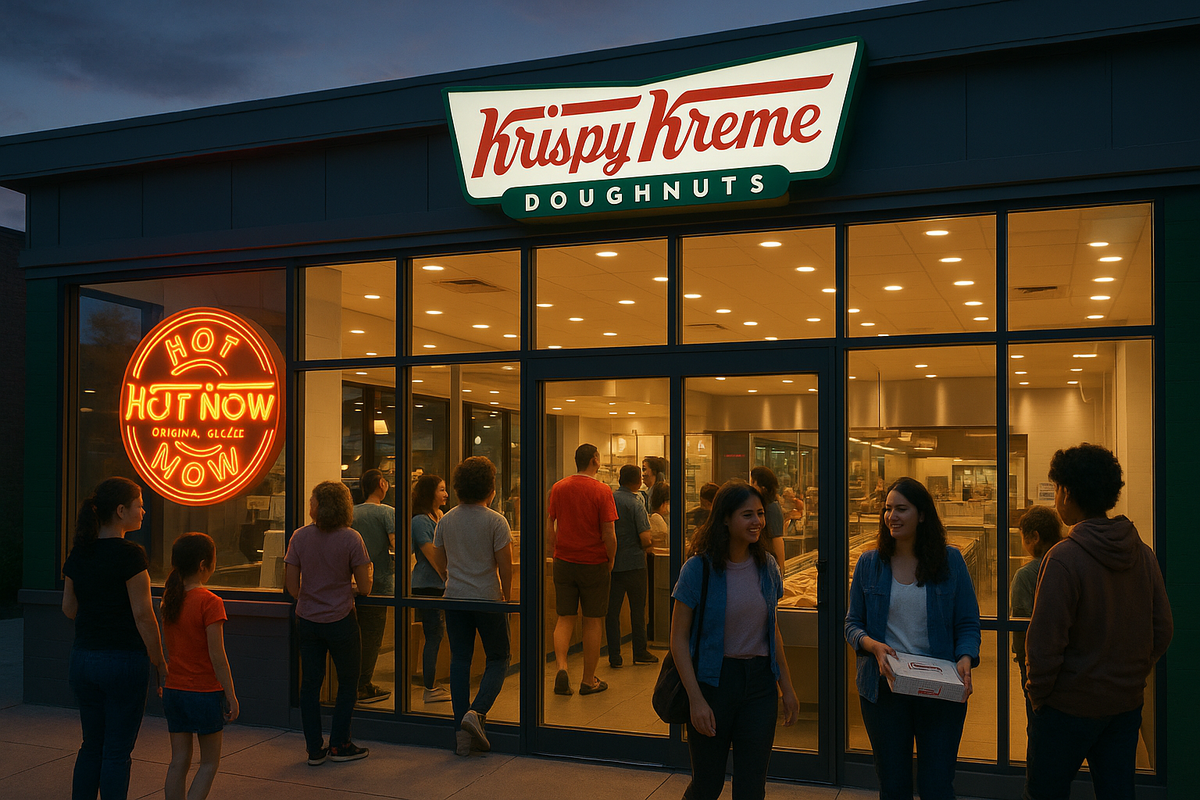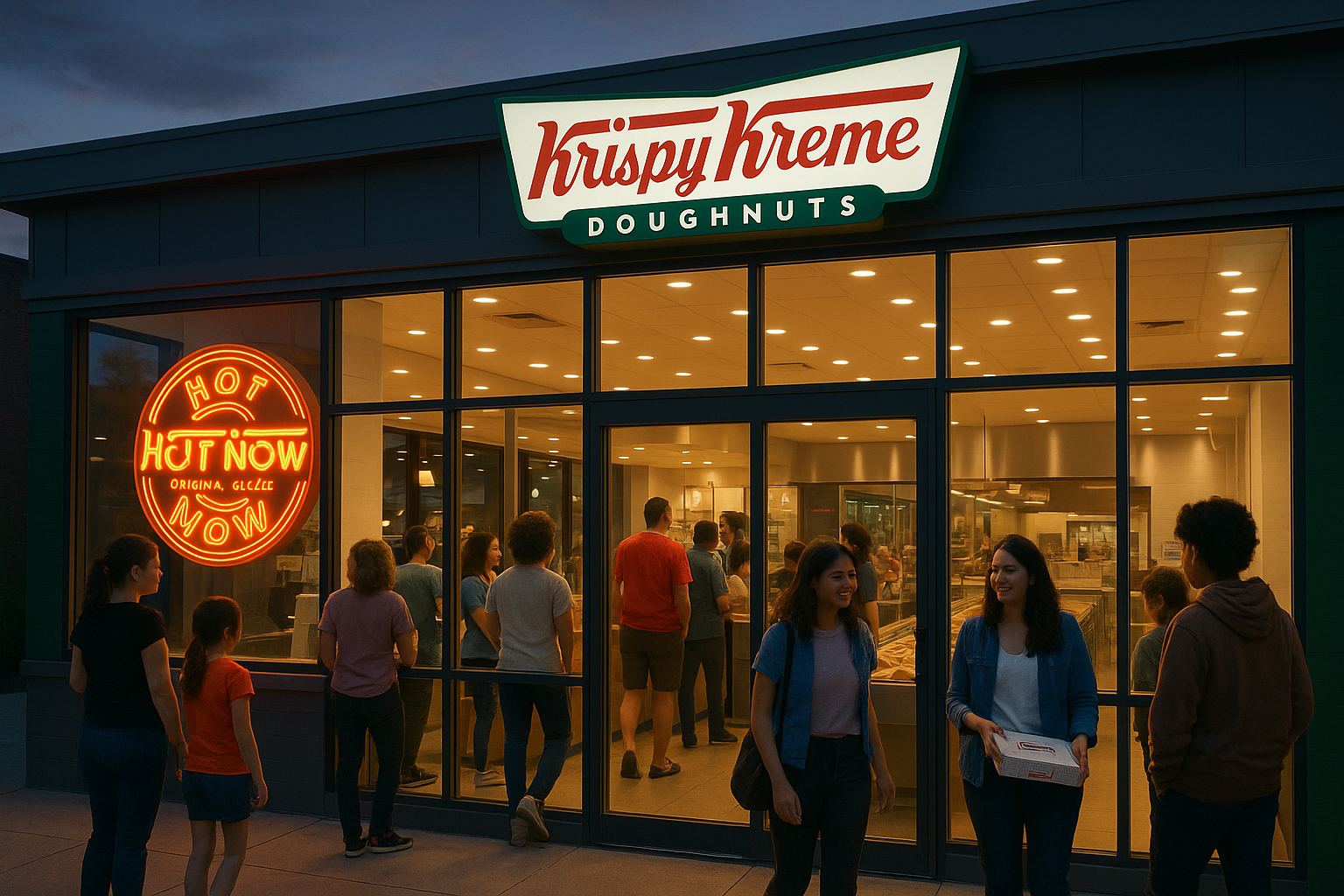History of Krispy Kreme, Inc.: From Doughnut Shop to Global Brand and Stock (NASDAQ:DNUT)


Krispy Kreme, Inc. (NASDAQ:DNUT) is one of America’s most iconic brands, with a history that traces the rise of a single doughnut shop into a global enterprise. The story of Krispy Kreme is not just about a beloved sweet treat—it’s a tale of American entrepreneurship, changing consumer tastes, corporate reinvention, and the challenging dynamics of the stock market.
Humble Beginnings: The Birth of a Southern Classic
The Krispy Kreme journey began in 1937 when Vernon Rudolph, a young entrepreneur from Kentucky, acquired a secret yeast-raised doughnut recipe from a New Orleans chef. He rented a building in Winston-Salem, North Carolina, and began producing doughnuts for local grocery stores. The aroma of hot, fresh doughnuts wafted onto the street, drawing crowds. Soon, customers were knocking on the door, asking to buy doughnuts directly. This demand inspired Rudolph to cut a hole in the wall, serving doughnuts to customers right from the production line—a tradition that remains core to the Krispy Kreme experience.
The Growth of a Regional Favorite
Throughout the 1940s and 1950s, Krispy Kreme expanded across the Southeastern United States. Its signature “Hot Now” neon sign became synonymous with fresh, melt-in-your-mouth doughnuts. The company’s focus on quality and consistency built a loyal following. By the 1970s, the Krispy Kreme brand had become a staple in Southern culture.
Modernization and Early Expansion
In the 1970s and 1980s, Krispy Kreme faced increased competition from larger chains such as Dunkin’ (NASDAQ:DNKN). To stay competitive, Krispy Kreme invested in modernizing its operations while preserving its original recipe and brand charm. The company’s unique production process, which showcased the doughnut-making process to customers, became a hallmark of its stores and a driver of customer engagement.
National and International Expansion
The 1990s marked a turning point for Krispy Kreme. The company embarked on a period of rapid expansion, moving beyond its Southern roots into major metropolitan markets across the United States. The opening of its first store in New York City in 1996 was a major milestone, with lines of eager customers stretching around the block. Media coverage fueled nationwide demand, and the company continued to expand aggressively.
Krispy Kreme went public in April 2000, listing on the NASDAQ. The initial public offering provided capital for further growth, and the company’s shares were initially met with significant enthusiasm. The brand’s mystique, combined with a booming market, sent shares to new highs.
Challenges and Setbacks
However, rapid expansion brought challenges. By the mid-2000s, Krispy Kreme faced operational difficulties, overextended franchises, and growing competition. The company was forced to close underperforming stores and restructure its business model. Allegations of accounting irregularities and slowing sales battered investor confidence, and the company’s stock plummeted. In 2005, Krispy Kreme was forced to undergo a major restructuring and refocused on its core strengths—quality doughnuts and strong branding.
A New Era: International Growth and Technological Innovation
Emerging from its financial struggles, Krispy Kreme began focusing on international markets, bringing its products to Europe, Asia, and the Middle East. The brand’s global expansion proved successful, introducing new generations to the original glazed doughnut.
The company also embraced technology, rolling out new retail formats and digital innovations. Drive-thru lanes, online ordering, and delivery partnerships became essential parts of Krispy Kreme’s growth strategy, especially during the COVID-19 pandemic.
Return to the Public Market and Recent Performance
In July 2021, Krispy Kreme returned to the public markets, listing again on the NASDAQ under the ticker DNUT. The IPO was a milestone, marking a new chapter for the company as it pursued continued growth in a competitive fast-food and snack industry. While the brand faces ongoing challenges—shifting consumer preferences, inflationary pressures, and fierce competition from other chains—Krispy Kreme remains an enduring symbol of American food culture.
Looking Ahead: Innovation and Brand Power
Krispy Kreme’s ability to adapt—through menu innovation, digital transformation, and creative marketing—will be crucial as it competes with rivals and navigates a dynamic global marketplace. Its international presence continues to grow, and the brand regularly experiments with limited-time offerings and partnerships to keep customers engaged.
From a single doughnut shop in North Carolina to a global brand with a NASDAQ listing, the history of Krispy Kreme, Inc. is a testament to the power of iconic branding and the resilience needed to weather business challenges. Investors and fans alike will be watching to see if the “Hot Now” sign continues to shine brightly in the years to come.
Disclaimer:
This article is for informational purposes only and does not constitute investment advice. Investors should conduct their own research or consult with a financial advisor before making investment decisions related to Krispy Kreme, Inc. or any other company mentioned.



